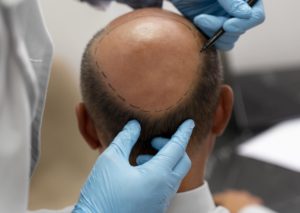Hair restoration can be a costly procedure but with recent advances in surgical techniques, you can expect real results.FUE (Follicular Unit Extraction) is a surgical procedure that is effective for people who have thinning hair. The procedure involves extracting individual follicular units from the donor area and transplanting them into the recipient area. This method requires less surgery and doesn’t leave a linear scar. Visit Emsculpt Clinic NYC-ForHair NYC Restoration Clinic – Dr. John Cole
 Generally, the recovery from a hair transplant surgery is relatively quick. There is some discomfort in the area where the grafts have been placed, but this can be controlled with pain medications. Within a few days, patients can resume normal activities, though they should avoid putting pressure on the transplanted areas of the scalp or wearing hats for a few weeks after surgery.
Generally, the recovery from a hair transplant surgery is relatively quick. There is some discomfort in the area where the grafts have been placed, but this can be controlled with pain medications. Within a few days, patients can resume normal activities, though they should avoid putting pressure on the transplanted areas of the scalp or wearing hats for a few weeks after surgery.
Another method for hair restoration involves the use of hair from other parts of the body. This hair is obtained from a thicker part of the scalp or from other body parts, and grafted to the balding area. More than half of all men and women will experience some form of hair loss, and hair restoration is a great way to regain a full head of hair. There are two basic types of hair transplants: follicular unit excision and follicular unit transplantation. Both types of procedures are effective for restoring hair, but there are some major differences between these two methods.
Before undergoing a hair transplant, you should consult with an experienced surgeon who is familiar with the procedure. Your surgeon will examine your scalp and hairline for any irregularities or hair loss. Your doctor may also take a small sample of hair and scalp skin.
The surgery is a major undertaking that requires time and careful postoperative care. After the procedure, a scar will be visible along the back of your scalp. This scar is not permanent, and will disappear completely with time. You will need to take special care of the linear incision on the back of your head while you are recovering.
The procedure will leave your scalp feeling tender for a few days. You may also need to take pain medications and anti-inflammatory drugs. Most people can return to work two to five days after the procedure. You should also avoid exposing your head to extreme sunlight and extreme heat during the first few days following the procedure. It is important to get plenty of rest after the procedure and to continue taking your regular medications.
